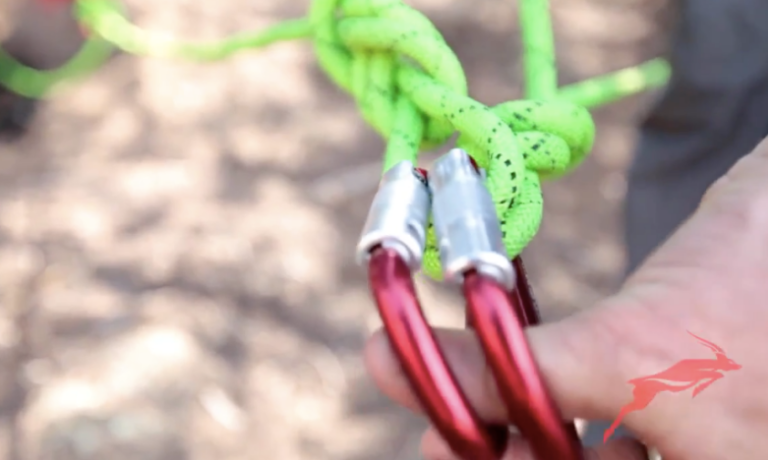The following is an excerpt from the RRG and RLA Anchors course. Thanks to Peak Rescue Institute for the graphics!
Selecting an Anchor
Anchor Selection
Anchor selection is a vast topic and could go on for hours, days, and even weeks. Excellent judgment, experience, practice, and insight all play a part in quality built anchors. I used the word successful because, honestly, most anchors are never tested, and many would fail put to task. Here are three considerations when selecting an anchor point.
-
Location – Where and what is the desired path of the load?
-
Strength – What are the anticipated loads, and at what point where these loads reach a critical point?
-
Time – As rescuers, we hate this, but time is something that must be considered. There are times when “good, not great” has to be ok, and this is where experience, insight, and practice plays a massive role.
Selection – “the action or fact of carefully choosing something as being the best or most suitable.” Let’s key to the word “suitable” – right or appropriate for a particular purpose or situation. So in some sense, a suitable anchor “depends” on several governing factors, and sometimes these governing factors will not feel right, look right and even add up.
Not all anchors are created equal. The practical use of anchors ultimately is designed and engineered with “purpose” in mind. We’ll briefly touch on five general categories of anchors now and go into greater depth later in this course.
Understand, for all anchors; the points must withstand actual and potential forces and stay within the agreed-upon safety factors.
General Types or Categories of Anchors
-
Working Line Anchors
-
Give yourself plenty of space or room to work in.
-
Set back from the edge with room for the haul field.
-
Consider the fall-line.
-
Will directionals be needed?
-
-
Belay Anchors
-
It can be set with the haul line or closer to the edge if needed.
-
Alignment with the fall-line.
-
-
Bombproof Anchors
-
An essential part because of the structural aspects of the anchor system.
-
With structural anchors, failure of the essential component means the structure fails as well.
-
Do not require a back-up.
-
With natural anchors, the point is so extensive or comprehensive failure is unimaginable.
-
-
Questionable Anchors
-
Strong enough to sustain a vectored load.
-
Not considered bombproof.
-
Minimum of one point with an independent back-up point.
-
-
Marginal Anchors
-
A given anchor point not substantial enough to support the load and must be combined with another anchor point.
-
The multiple points are not back-up points, but an array of anchor points serving a single focused purpose.
-
Each point is a part of the system.
-
Where do you need to go?
-
Select an efficient fall line to reach the victim.
-
Don’t fall into the trap of rappelling directly down on top of the fallen subject (non-pickoff situation) in a manner that might cause rockfall injury. Generally, a descent adjacent to the patient’s location makes more sense. Packaging the patient can occur at their resting point, and then the litter can be traversed to the raising or lowering system.
-
Lowering route selection should avoid additional hazardous terrain if possible.
-
Is a deviation pulley required to redirect the fall line of the rope?
-
What rescue tasks need to be accomplished (e.g., edge management, lowering, raising, or a traverse)?

Where should the anchor “focal point” be located?
-
Raising the focal point off the ground increases the efficiency of the belayer/attendant.
-
Is a floating focal point necessary?
-
Does the focal point require pre-tensioned back-ties or front-ties?
-
The focal point prevents the extension of an anchor point in a load-sharing anchor system.

Other Anchor Point Considerations
-
Pad anchor points with sharp edges.
-
Evaluate the integrity of the anchor points being utilized.
-
The anchor point should not be hot to the touch or expose the rope to Haz-Mat.
-
Seek system-wide redundancy, which can require the use of more than one anchor point. Avoid over-reliance on a single feature or placement of one piece of artificial protection (e.g., bolt or camming device).
-
Attach at the base of an “anchor point” to prevent a leverage situation.

What directionals are available if needed?
-
A directional may be needed for the use of specific anchor points.
-
Is an artificial high directional needed at the edge?
-
Rig the focal point high to take advantage of any natural high directional (e.g., stair-stepped edge) and allow for more efficient edge management with a litter.

Locating Anchor Focal Points
During the initial size-up of a rescue incident, determine the focal point locations for both rope systems (mainline and belay line or a mirrored rope system). Using mental projection to predict how ropes lines will run when they are set up will assist in avoiding a rigging nightmare. Take a moment to carefully strategize at the outset, which will pay off in the long run in not having to de-rig later because of a poor selection. The focal points should be situated far enough from the edge to allow for the construction of a haul system (if required), which does not place the haul team inside the hazard zone. A constricted location at the top of a cliff can be employed with the use of a change of direction that still permits the focal points to have some distance from the edge. Ultimately, both focal points need to be situated outside the hazard zone.
It was previously considered suitable to stagger the focal point locations back from the edge. However, it now recognized that there are more advantages to having the focal points of both ropes side by side. Communication between the two rope systems is far better, and each rope operator can more easily monitor what the other rope system is doing. On-the-job detection and correction of the technique are far better.

Peace on your Days
Lance











8 thoughts on “Selecting An Anchor”
stromectol price in india Aquafish Cephalexin
Buy Fish Amoxicillin where can i buy stromectol ivermectin
Treatment Vitiligo is difficult to treat. stromectol online buy
Dapoxetine En Australie stromectol canada
Viagra Dosis Precio buy ivermectin tablets Viagra Indicaciones
Active against tubercle bacilli residing in macrophages May cause hyperuricemia resulting in a gouty attack Potentially hepatotoxic d. stromectol msd Cialis O Viagra Dove Comprare
Propecia Colchones stromectol for sale Buy Cheap Amoxil Without Prescription
unifiram (developmental code name dm-232) is an experimental drug. that has antiamnesic and other effects in animal studies with far greater potency than piracetam. a number of related compounds are known, such as sunifiram (dm-235) and sapunifiram (mn-19). unifiram has two enantiomers, with the dextro form being the more active isomer. it has been shown to reduce the duration of hypnosis induced by pentobarbital, without impairing motor coordination. as of 2015, no formal human studies with unifiram have been conducted. unifiram is not patented and, despite the lack of human and long-term toxicity studies, it is commonly sold online.
Comments are closed.